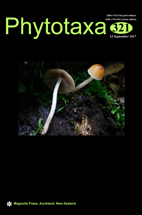Abstract
Crotoneae comprises six genera, of which Astraea, Brasiliocroton, Croton, Sagotia and Sandwithia all occur in Brazil. This tribe needs study because it is morphologically diverse, poorly known taxonomically and has numerous species in need of lectotypification, particularly Croton, the largest genus with over 1200 species. We present here the taxonomic treatment for the representatives of Crotoneae occurring in Chapada dos Veadeiros, Goiás, Brazil, one of the best preserved areas of the Cerrado phytogeographic domain with high levels of plant endemism. The study is based on monthly collections made from January 2012 to March 2016, consultations of collections from herbaria CEN, IBGE, UB and UFG, and review of pertinent literature. Thirty five species are recognized, 33 of which belong to Croton and two to Astraea. Seven of these constitute new records for Goiás State, nine are illustrated for the first time, and four have their descriptions revised. Additionally, keys to identify the studied taxa, descriptions with comments on geographic distribution, habitat, morphological relationships, flowering period and fruiting and maps, and illustrations for 34 of the 35 species recorded and images for 29 of them are provided, as well as five synonymizations, 17 lectotypifications and three second step lectotypifications.

